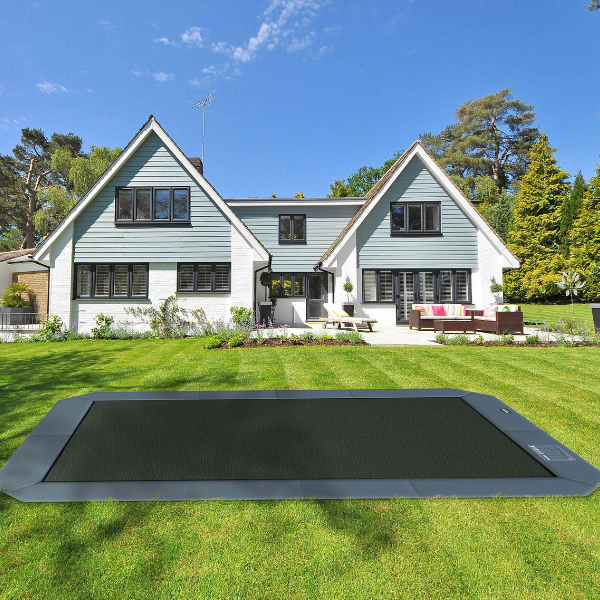Installing an in-ground trampoline can be a fantastic addition to your backyard, offering a safer jumping experience compared to traditional above-ground models. Many in-ground trampoline owners also praise its low profile compared to the tall above-ground trampolines.
However, before you start digging a hole to put a trampoline in, homeowners must consider the drainage impact and how these trampolines can affect the overall water flow in their yards. Without proper planning, in-ground trampolines can easily alter your yard's natural water flow and drainage patterns.
This can cause permanent damage to the trampoline and potentially lead to standing water, soil erosion, and other landscaping issues. With that in mind, here are some of the effects of in-ground trampolines on soil drainage and water runoff.
Effects of In-Ground Trampolines on Soil Drainage and Water Runoff
One of the main concerns with in-ground trampolines is how they affect the way water drains through your yard. When a large hole is dug to accommodate the trampoline, it essentially creates a basin that can collect rainwater if not correctly managed.
The geological term for this behavior is a dendritic drainage pattern. Simply put, this means that water tends to flow from a higher point to a lower point. Before digging an installation hole for an in-ground trampoline, the ground in this area would have all been roughly the same height, so water would not have been able to drain into one specific spot.
However, after the addition of this hole, it will now be in the lowest position in this area, and all the water in the area will slowly drain into it. This accumulation of water can lead to problems such as:
- Water Pooling: Without adequate drainage solutions, the pit may hold water after heavy rainfall, creating a muddy or even stagnant water issue.
- Soil Saturation and Erosion: Excess water trapped in the trampoline pit can oversaturate the surrounding soil, leading to erosion and weakening the ground structure.
- Flooding Risks: If your yard has poor natural drainage, water runoff may be redirected in unintended ways, potentially flooding other areas of your landscape or even causing damage to nearby structures.
How In-Ground Trampolines Can Alter Natural Water Flow and Drainage Patterns in Your Yard
A properly designed landscape has a natural water drainage system that directs water away from structures and prevents pooling. When an in-ground trampoline is installed, this system can be disrupted, leading to altered water movement. Here are some of the ways how:
- Blocking Natural Drainage Paths: If the trampoline is installed in an area where water naturally flows, it may impede movement, causing water to back up or pool in undesired spots.
- Changing Soil Composition: The process of digging out a large portion of soil and replacing it with a trampoline can compact surrounding soil, reducing permeability and limiting the ground's ability to absorb water efficiently.
- Influencing Neighboring Properties: In some cases, altering drainage patterns in your yard may even unintentionally redirect excess water toward neighboring yards, potentially causing disputes or additional landscaping challenges.
How to Prevent Drainage Issues from In-Ground Trampolines
To prevent the adverse effects of in-ground trampolines on soil drainage and water runoff, proper installation and water management strategies should be implemented:
- Drainage Systems: Installing a drainage system such as a sump pump, drain pipes, or a gravel bed at the base of the trampoline pit can help divert water away and prevent pooling.
- Perforated Pit Lining: Using a permeable material for the trampoline hole lining allows water to drain naturally into the surrounding soil rather than collecting at the bottom.
- Strategic Placement: Placing the trampoline in a naturally elevated area can help prevent it from becoming a low-lying water trap.
- French Drains or Catch Basins: These can be installed around the trampoline to channel excess water away efficiently, reducing erosion and runoff issues.
How to Prevent In-Ground Trampolines from Altering Natural Water Flow and Drainage Patterns in Your Yard
While in-ground trampolines provide many benefits in terms of safety and aesthetics, they also should come with serious considerations regarding drainage impact. If not correctly installed, in-ground trampolines alter your yard's natural water flow and drainage patterns, potentially leading to unwanted water accumulation and soil instability.
However, with careful planning and appropriate drainage solutions, you can enjoy your trampoline without compromising your yard's integrity. Ensuring proper drainage will help maintain the health of your landscape. It will also ensure that your in-ground trampoline has a long lifespan without any water damage.

